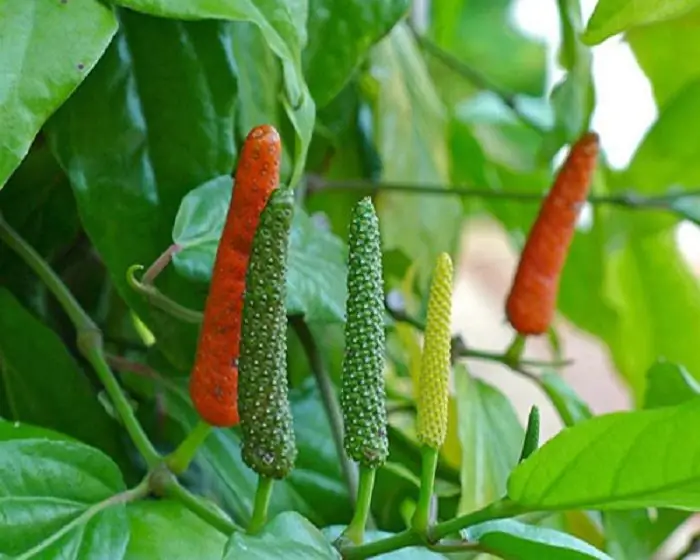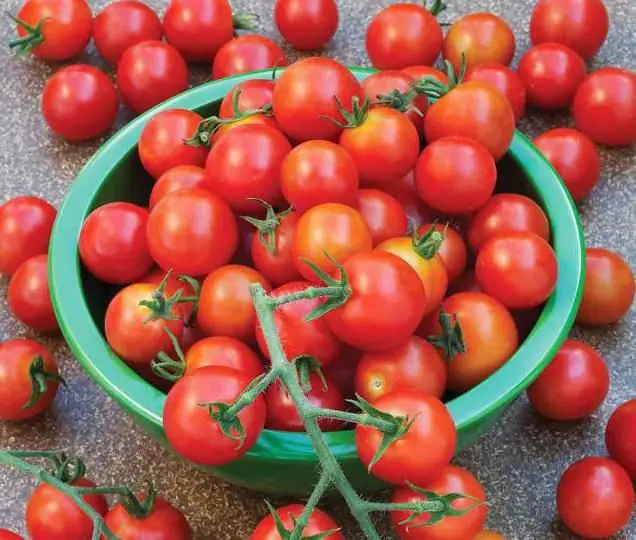2026 Author: Howard Calhoun | [email protected]. Last modified: 2025-01-24 13:10:41
When you want to quench your thirst in the summer heat, a cold watermelon comes to mind. Indeed, it is impossible to spend the summer period without tasting these wonderful juicy fruits. However, such a culture is not limited to the most famous varieties. There are other types of watermelons that are not inferior in their taste and varietal qualities to those berries to which we are accustomed.
The purpose of breeding new varieties
Due to climate change, it is becoming increasingly difficult to grow gourds. Therefore, breeders are trying to develop new varieties of watermelons that are less whimsical and can adapt to changes in weather conditions. It would be useful for every gardener to know about such varieties, since some of them can be grown in the northern regions. With this information, farmers may want to radically change the way they grow their crops. The article provides a description of the varieties of watermelons. The photos below illustrate the external differences of these amazing fruits.

Botanical description of watermelon
Creeping plant with flexible, far-growing shoots, reaches 3 meters in length or more. Each of the stems has branched tendrils and dissected individual leaves. Flowers pale yellow, large.
The fruit is a false berry, the classic color of which varies from light pink to bright scarlet. The rind of the watermelon is mostly green in color with various stripes or dashes. Fruit shape is spherical or oval.
At a Glance
Watermelon is a herbaceous crop belonging to the gourd family. The plant is successfully cultivated in regions with short winters and a long hot period in summer. The melon culture is drought-resistant, and it feels great in the steppe territories and the Mediterranean.
In Russia, watermelons are grown on a large scale in the Volga region and southern regions. In these regions, the fruits have time to ripen on their own in the fields. In the northern regions, farmers have to use auxiliary methods to fully ripen watermelons. For this purpose, greenhouses and special manure pits are used, sprinkled with earth in the form of a hill. Experienced farmers manage to get rich harvests of watermelons and not in very favorable conditions for this crop.

What a beginner farmer needs to know?
To get a good harvest of tasty and juicy berries, novice farmers should find out what varieties of watermelons are grown in their area. The right choice of seed material is always the key to the expected result.
In special stores you can buy watermelon seeds that grow even in Siberia. There is a sufficient selection of crops that can tolerate a drop in temperature, and also have strong immunity to anthracosis. There are early and late types of melons.
Growing a crop in a greenhouse is a suitable option for the middle zone of the country. For the arrangement of such premises, a dense film or polycarbonate is usually used. This material allows air and light to penetrate, which are necessary for seed germination and plant growth.
Seeds before planting watermelons should be treated with copper sulphate. This will protect the plants from diseases.

Early cultures
Early-ripening fruits are usually small and have a less pronounced taste characteristic of watermelons. But their advantage is that already 45 days after the formation of the first leaves, it will be possible to enjoy their fruits, even in cities such as Orel and Kaluga.
Here are some names of watermelon varieties bred for early cultivation: Ultra early, Spark, Siberian fires. Below we consider each type of pumpkin culture separately:
- Ultra early. The most resistant variety to temperature extremes. The bright scarlet berry is rich in sucrose. Pulp with veins and medium-sized black seeds. Full maturation of the fetus occurs after 2.5 months.
- Spark. One of the earliest types of watermelons, the fruits of which can be harvested after 45-50 days after germination. The culture is rapidly adapting tonew climatic conditions after disembarkation and unpretentious care. The fruits are round, with a uniform dark green skin. The pulp is sweet, watery. Weight - 1-3 kg (the first fruits are usually smaller).
- Siberian lights. The culture is adapted to adverse climatic conditions and is resistant to Fusarium. Suitable for regions with a short summer period and a lack of sunlight. It is grown in seedlings with transplantation in open ground or in greenhouses. The duration of plant development from planting to harvest is about 80 days. Watermelons of this species have a dark green color and narrow small dashes. The variety Siberian Lights is characterized by a thin skin of the fruit and small beige seeds. The pulp is light in color, sweet, has a porous structure.

Late varieties of watermelons
- Chill. This variety is characterized by good transportability and keeping quality of fruits. Juicy red berry has large brownish seeds with speckles. The fruits are round, deep green in color, with dark stripes of indefinite shape. The bush has a strong vegetative development. Its powerful lashes grow to 4-5 m. The ripening period of watermelons is 2.5-3 months, the fruit weight can reach up to 5 kg.
- Icarus. Among other types of watermelons, one can single out such features of the variety as crop stability and a long period of fruit storage. Under the right conditions, the berries can be stored for up to 6 months and are suitable for conservation and pickling. The plant tolerates drought well and is resistant to Fusarium, but is not protected fromanthracnose. A bush with a long leading lash. The leaves are dissected, with a weak gray bloom and a barely noticeable fluff. Dark green fruits with a pattern in the form of studded stripes, the peel is not thick, elastic. Inside the berry has a raspberry or red color, sweet, with a pronounced watermelon flavor. Seeds brownish, small. The average weight of one fruit is 5.5 kg.
Photos of watermelon species of early and late varieties can be found in the article.
Mid-ripening
- Astrakhansky The most popular watermelons, in demand among buyers and farmers. They are valued for high yields, disease resistance, and long shelf life. Massive berries with a thin skin can reach a weight of 6 kg. They have a fresh aroma and amazing sugary taste - this is the sweetest variety of watermelon. The shape of the fruit is oblong, with a striped surface. The pulp has a pronounced red color. Seeds are black, medium size.
- The Black Prince. It is resistant to temperature fluctuations and is characterized by good preservation of fruits. The bush is large with a long main lash and wide green leaves. The fruits have an oval, rather elongated shape. Internally, the contents of the berry are bright red in color with dark dotted seeds, and a loose structure. Skin of medium density. The average ripening period is 95 days.

Unusual types of pumpkin culture
Thanks to their diligence and ingenuity, some farmers turn everyone's favorite berry into a curiosity. For example, a farmer from Arizona managed to grow a real giant watermelon. Hugethe berry, which was named Carolina Cross, reached 122 kg in weight.
There are also large varieties of watermelons in our country. These include the following types of culture: Palladin F1 (20 kg), Crimson glory F1 (up to 16 kg), Astrakhan (10 kg), Charleston gray (up to 12 kg) and Russian size (over 60 kg).
Farmers from Japan found it necessary to diversify the shape of the fruit for successful transportation. Regardless of the types of watermelons, their fruits grow square. As soon as small ovaries appear on the bushes, they are carefully placed in wooden boxes in which they continue to grow and eventually take on their shape.
There is a unique variety of gourds in miniature size (2cm), which is considered a delicacy. You can taste this fruit only in chic restaurants in America. It does not have the classic taste of watermelon and is more like a cucumber.
In Russia, you can find watermelons with white and slightly greenish skins. Their flesh is cream and white. They also grow fruits that have a slight lemon flavor, as described below.
- Lunar. One of the most unconventional varieties for this culture is yellow watermelon. The unusual color of the pulp with small brown seeds does not detract from the taste of the berry. The shape of the fruit is similar to an ellipse, its surface is smooth, green, with dark stripes. Bush with medium size lashes and small leaves. The period from sowing seeds to the full ripening of watermelons is about 90 days. Fruit weighing up to 3 kg can be stored for 30 days after harvest.
- Vector. Has nutmegtaste and has a large amount of monosaccharides. This peculiar aftertaste distinguishes watermelon from all its "brothers".
Unique types of watermelons and photos of them can be seen below.

Harvesting
The fruits of the culture in question do not have the ability to ripen after being removed from the bushes. Therefore, the task is to correctly establish the full maturity of the watermelon. The types of varieties do not matter here, since all signs of the suitability of the fruit are determined by the vegetative appearance and touch.
- The first thing they pay attention to is the stem and mustache. They must be completely dry. Accordingly, the fetus no longer receives proper nutrition and is ready for use.
- The yellow spot where the watermelon touched the ground indicates its maturity.
- If you hit the watermelon with a light click and at the same time it will ring dully, then you can safely tear the fruit from the bush.
- Watermelon species that have thin skins can be heard crackling when the fruit is squeezed.

Methods of growing watermelons in cold regions
Gardeners who decided to plant southern crops in harsher conditions did not regret it. Undoubtedly, diligence and experience are important here. But there are two ways that significantly accelerate the ripening of fruits in the short period of time that the northern summer gives.
The brightest and warmest place is chosen on the site, and warm beds are prepared on it. They need to be placed so that different types of watermelons do not grow too close to each other, and do not pollinate. Since cucurbits tend to spread out, a distance of about 80 cm should be left between the compost grooves.
The beds are deepened by 40-50 cm and laid with dry grass, straw, hay and organic waste. Sprinkle with compost or humus on top, and the last layer with fertile soil. Such compost "pillows" have been prepared since autumn. They can be covered with some material on top so that moisture remains in them until spring.
The second method is growing watermelons in greenhouses in an upright position. Tapestries are prepared in advance for tying plants. Bushes are formed, leaving two lashes on them. When the fruits grow up and gain weight, they are partially placed in the so-called mesh-juices, which are securely tied to the base. When heat sets in, the film on the greenhouse must be removed so that the watermelons develop in natural conditions.
Application
Most often, berries are used for pickling and preservation. For this purpose, they can be removed a little underripe.
Jam and candied fruits are cooked from the peel of watermelons, and also used as a medicine. The crusts from ripe watermelons are washed, cut into thin strips, and dried well on the street or in special dryers. An infusion of this part of the plant relieves puffiness.
If you prepare dried watermelon flowers in summer, then in winter this medicine will serve as an excellent expectorant.
Value of fruit
Fresh watermelon berries, as well as products based on them,have positive effects on many processes occurring in the human body. They cleanse the kidneys and even help to crush and remove stones. Watermelons improve the process of hematopoiesis, strengthen the immune system, normalize the functioning of the prostate gland, help in the treatment of colitis, sclerosis, dropsy and arthritis.
Conclusion
We hope that the types of watermelons, photos, names of some of them provided in our article will help draw certain conclusions and choose the right variety for your area.
Recommended:
Coins of the Soviet Union and modern Russia: what metal are coins made of, their features and varieties

The production of money on the territory of our country at all times was associated with a number of difficulties: the economy either developed or collapsed sharply, dragging faith in the Russian currency to the bottom, giving rise to massive disbelief in it and inflation. Now we have clear state standards for production and minting, all reforms are taking place gradually and accurately, but during the times of revolutions, civil and world wars, the question of what metal coins are made of in our country faded into the background
Long pepper: types, varieties, cultivation features, recipes with its use, medicinal properties and uses

Long pepper is a popular product that has found wide application in many industries. There are many varieties of peppers. This culture has a beneficial effect on the human body and has a wide spectrum of action. It is used in the food industry and traditional medicine
Watermelon: planting and care

One of the most popular garden plants is watermelon. In addition, it does not require too much time and labor when growing. Planting and caring for it are no particular complexity. Watermelon fruits are very tasty and he althy
Sweet varieties of tomatoes: reviews. Sweet varieties of tomatoes for greenhouses

Gardeners plant various vegetables. Sweet varieties of tomato are considered one of the most sought-after varieties, as they are ideal for different occasions. More about them will be discussed in the article
Watermelon: cultivation and care in the country

Many summer residents would like to know how to care for watermelons correctly. This culture is not very typical for the middle lane, it loves a lot of light and heat. And therefore, success in its cultivation largely depends on how accurately all the rules of agricultural technology are observed

